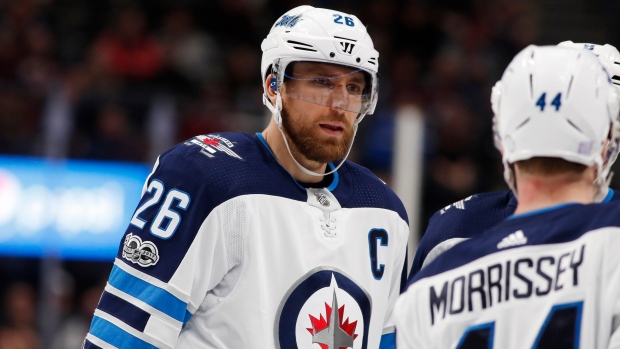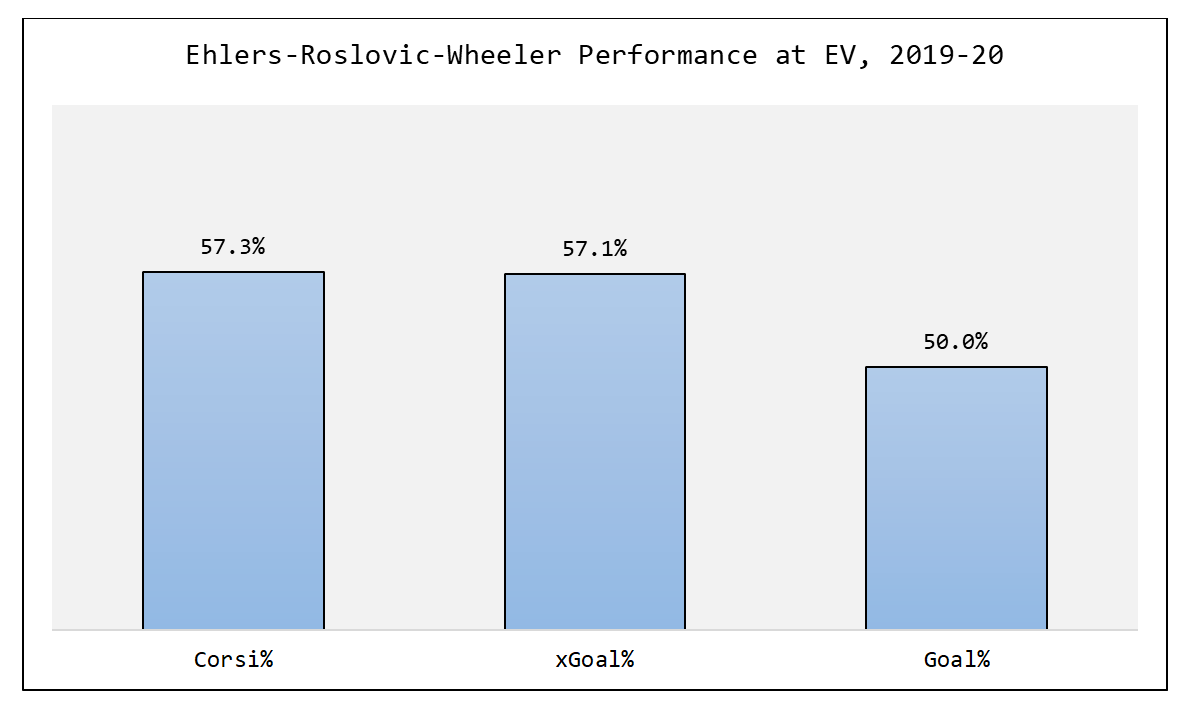Nov 28, 2019
Winnipeg winning as Wheeler’s role changes
Former first-line winger is playing more of a secondary role for the first time in his Jets tenure, Travis Yost writes.
By Travis Yost

Despite a slow start to the season, the Winnipeg Jets have managed to remain in the thick of things in the competitive Central Division.
The Jets have amassed 31 points through 25 games – good enough for third in the division, though the Colorado Avalanche and Nashville Predators are nipping at their heels.
Winnipeg’s turnaround has been keyed by a 7-2-1 stretch over the last 10 games – a stretch where head coach Paul Maurice has instituted some noticeable changes to the Jets’ lineup. The biggest change has been the establishment of a new top line featuring superstar centre Mark Scheifele flanked by young wingers Kyle Connor and Patrik Laine.
The swap broke up two common pairings that simply were not working. The first was the separation of the aforementioned Laine and Bryan Little, who is currently recovering from a head injury. You may recall there was a bit of off-season drama between the two players – we looked at this right after the story broke – and though Laine certainly could have handled his frustration better, his underlying argument about getting ice time with more impactful offensive players appeared valid.
Laine’s promotion meant a landscape change for Scheifele. The Jets have tried a few different options with Scheifele over the years, but Blake Wheeler has been far and away the most popular winger for Maurice to pair with his top centre. From 2017-19, Scheifele played around 90 per cent of his even-strength minutes with the 33-year old Wheeler. (To a lesser extent, Scheifele saw minutes with Connor and Nikolaj Ehlers.)
This season, it’s been a different story. Laine’s promotion to the team’s top line, the establishment of Connor as a fixed winger for Scheifele and Little’s injury creating a hole in the lineup have opened the door for Wheeler to assume a second-line centre role. Wheeler is now in more of a middle-six role – the Jets have mostly focused on now keeping him with Ehlers and Jack Roslovic, and the second line has certainly had some success (albeit in limited minutes) in the process:

Winnipeg had to try something different, especially in light of last season’s collapse and the obvious talent deficiencies on the blueline that need to be masked in some capacity. But one thing that is worth watching as a result of this is what it means for a player like Wheeler – a long established first-line presence – and the minutes he’s going to get going forward.
Consider what just one line combination change has meant for Wheeler’s usage over the last few weeks. I’ve compiled Wheeler’s usage rates at 5-on-5 and all situations since joining the Jets, and stratified his usage in the 2019-20 season – both before and after Winnipeg broke up their old top line.
Here’s what it looks like:

Even over just a handful of weeks of games, that’s a sizable reduction in usage. And almost all of the lost ice time is coming at even strength, with Wheeler playing a bit more of a secondary role for the first time in his Jets tenure.
It will be interesting to see if Maurice sticks with these lines and, consequently, if Wheeler’s minutes remain down relative to where he has been in years past. Wheeler is still a very productive player at this point of his career – he is fifth on the team in scoring with eight goals and eight assists (16 points) in 24 games. But Father Time is always lurking, and the Jets needed to find a way to allocate more minutes to their budding young stars.
Perhaps – to borrow a phrase from the National Basketball Association – some additional load management for a player with a lot of mileage will reap real benefit when the calendar turns and the playoff push begins.
Data via Hockey Reference and Natural Stat Trick

